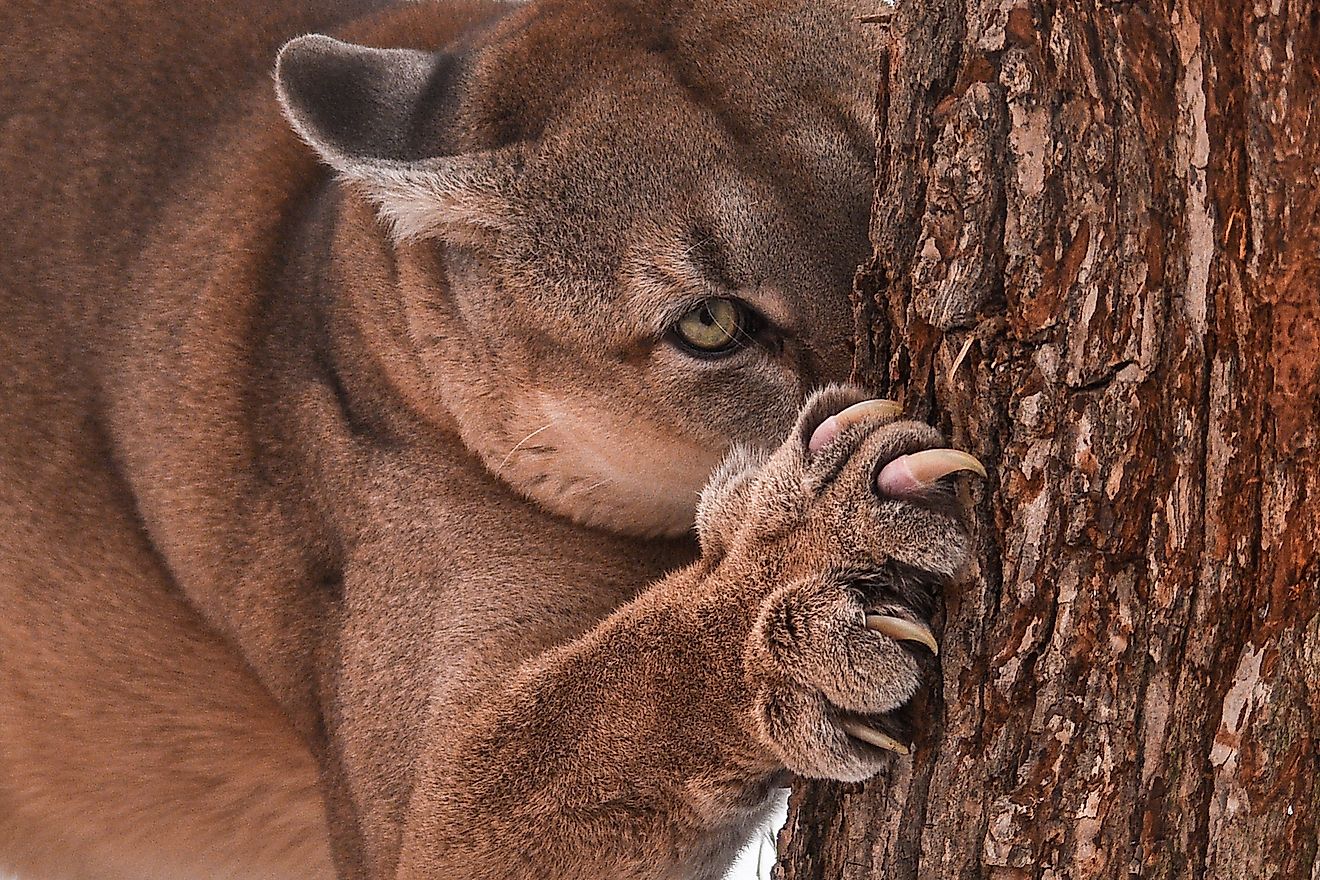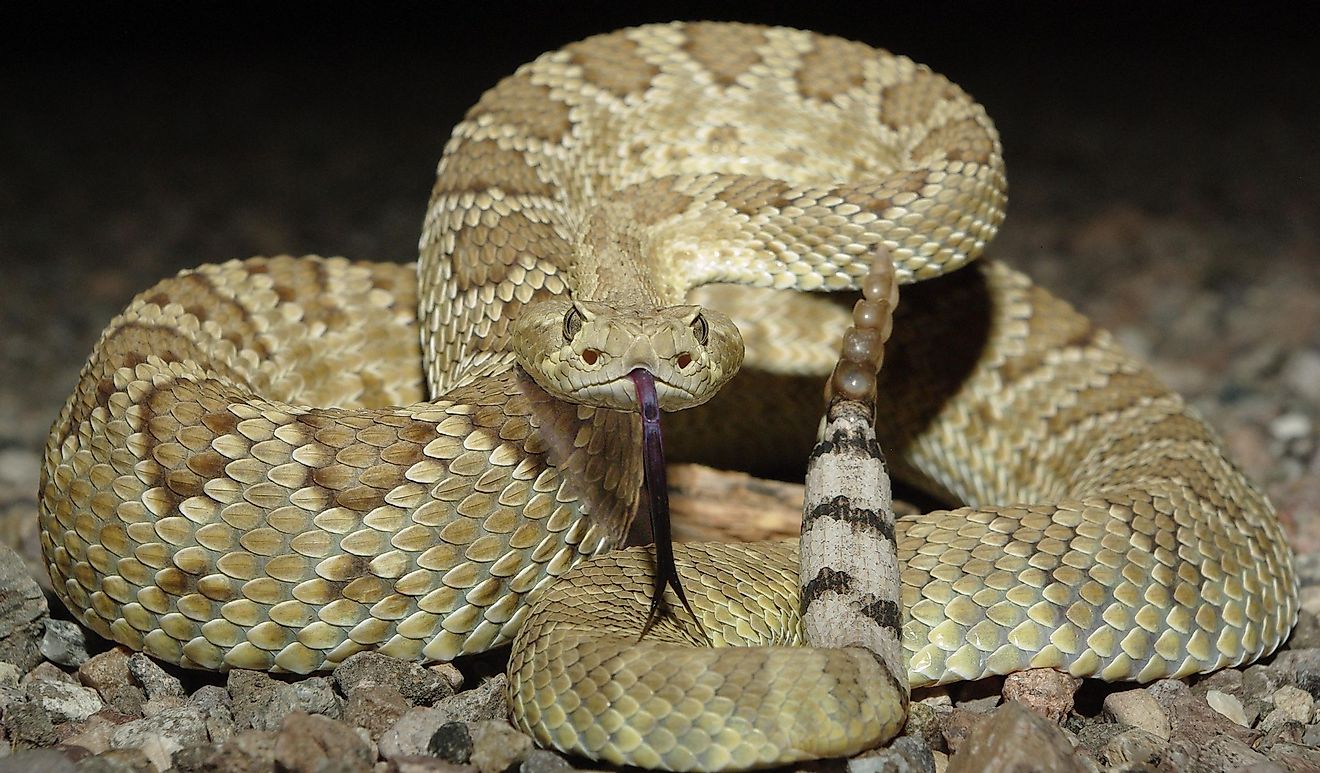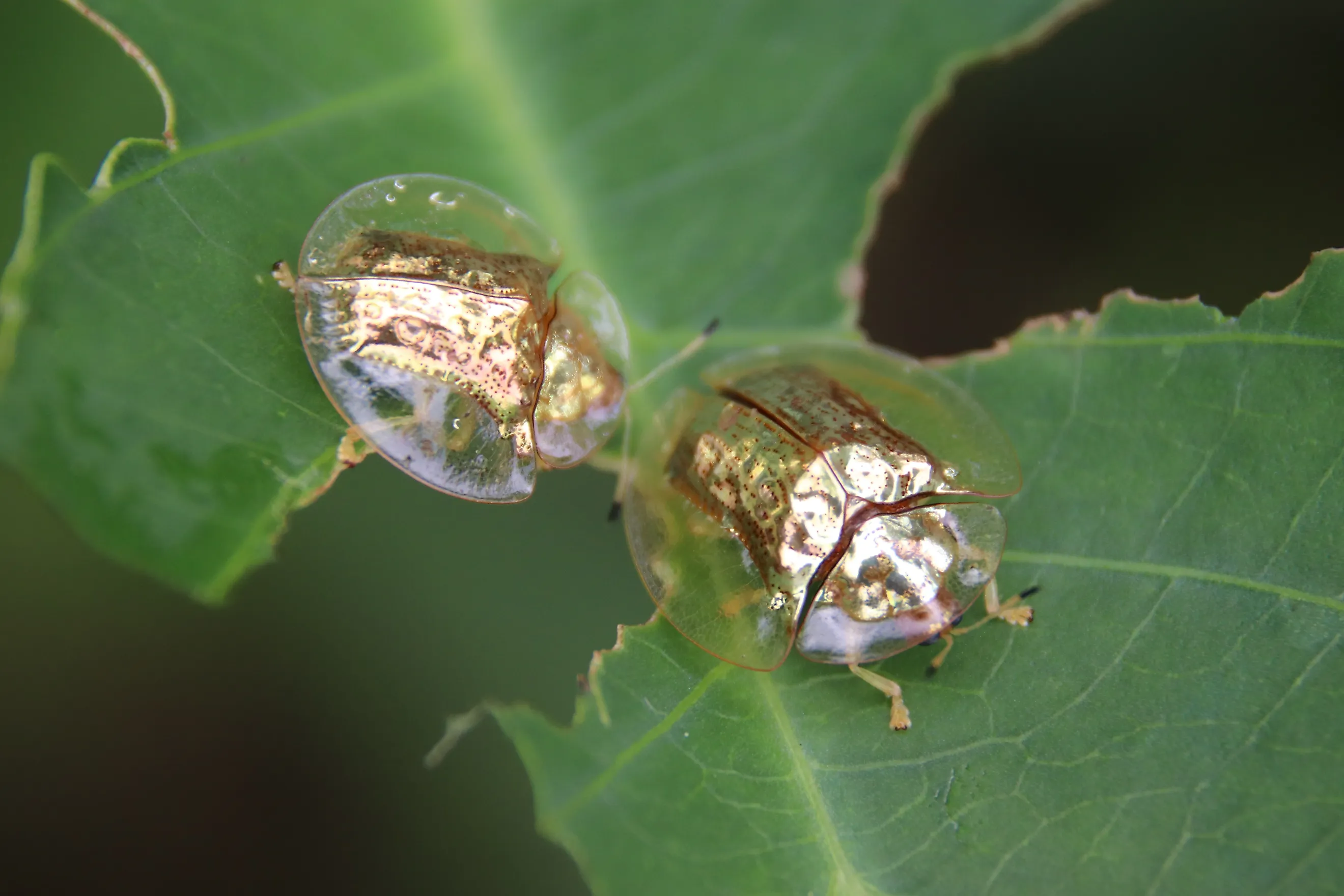
The Beetle That Flashes From Gold to Ruby
Among North America's many beetles, one species stands out not for its size or strength but for its ability to vanish in plain sight with a sudden flash of color. The golden tortoise beetle (Charidotella sexpunctata) displays a brilliant, metallic gold when undisturbed, but when provoked, it shifts rapidly to a rich red hue. This transformation happens within seconds and reverses just as quickly. To observers, it appears as if the beetle turns from a polished jewel into a glowing ruby. Scientists have studied this change for decades, intrigued not only by its visual effect but by the complex biological process behind it.
Description And Physical Features
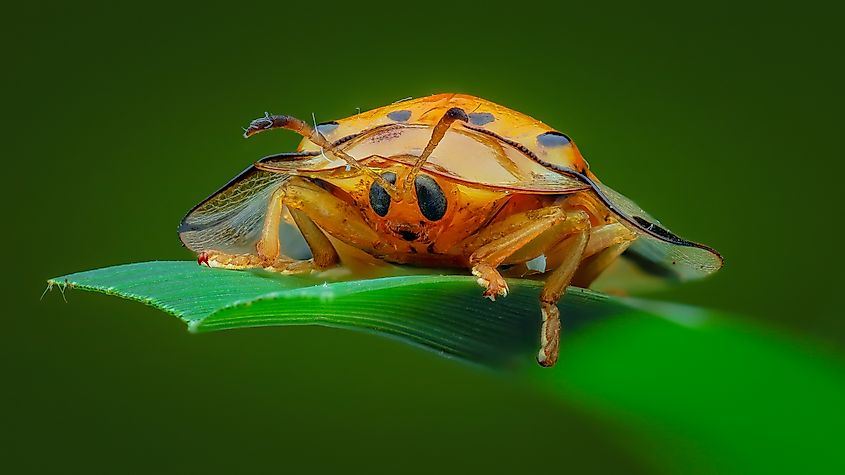
Measuring just 5 to 7 millimeters (0.2-0.3 inches) in length and weighing under a tenth of a gram, the golden tortoise beetle is a small, shield-shaped insect with a nearly transparent outer shell that often gleams with metallic brilliance. Its domed, rounded body resembles a drop of molten metal when seen up close. The beetle’s distinctive tortoise-like form comes from a wide, flat margin that extends beyond its body, giving it a smooth, button-like appearance. When resting on leaf surfaces, it can be nearly indistinguishable from a glint of sunlight or a water droplet.
The Beetle’s Shimmering Gold
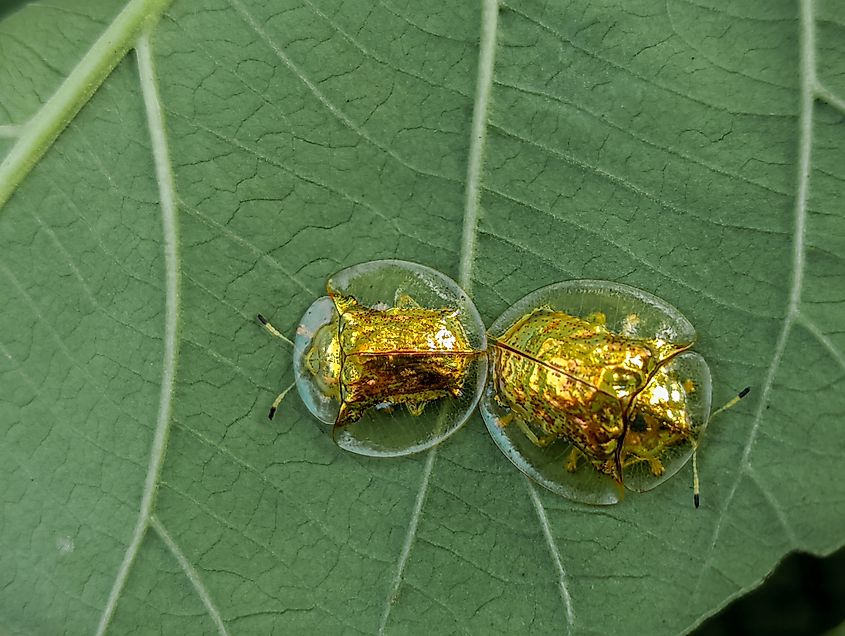
In its resting state, the golden tortoise beetle reflects light with an intense, metallic sheen that resembles polished gold. This effect does not come from pigments but from microscopic structures in the beetle’s cuticle. These layers manipulate light through thin-film interference, a phenomenon similar to the iridescence seen in soap bubbles or butterfly wings. When light hits these layers, certain wavelengths are amplified while others cancel out, producing the beetle’s dazzling appearance.
The gold color serves as both camouflage and a deterrent. Resting on bright leaves, the beetle blends into sunlit surfaces. The high reflectivity may also confuse predators by mirroring the surroundings. This passive defense remains stable unless the beetle senses a threat, at which point its transformation begins.
From Gold to Ruby
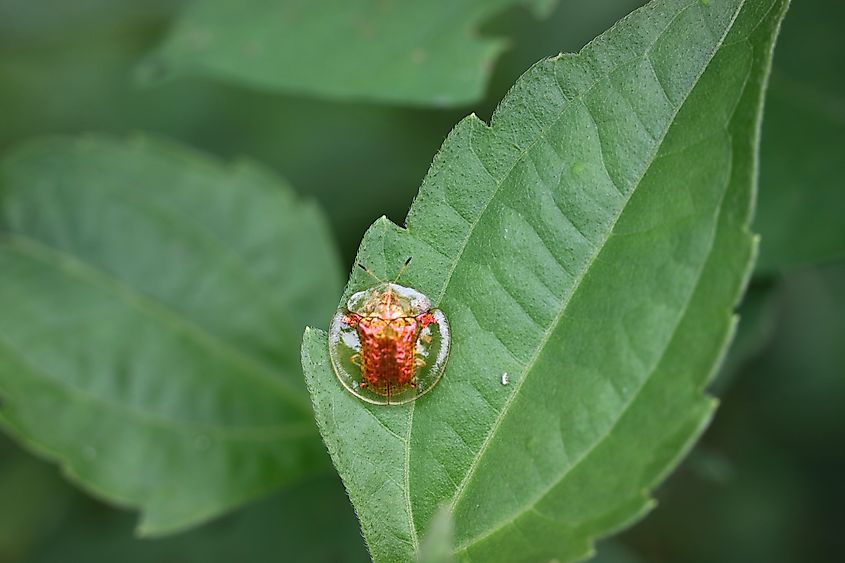
The golden tortoise beetle changes color from gold to reddish-brown or ruby when disturbed. This transformation occurs because fluid moves beneath its transparent cuticle, altering the microstructure of the shell. The shift in how light reflects off these layers causes the beetle’s color to change quickly and reversibly.
This color change likely serves as a defensive adaptation. The red hue may signal toxicity or make the beetle appear less appetizing to predators. Additionally, the sudden shift in color may startle or confuse potential threats, giving the beetle a chance to escape. This rapid and reversible transformation helps the beetle survive in its environment by deterring predators through visual signals rather than physical defense.
Scientific Discoveries and Research
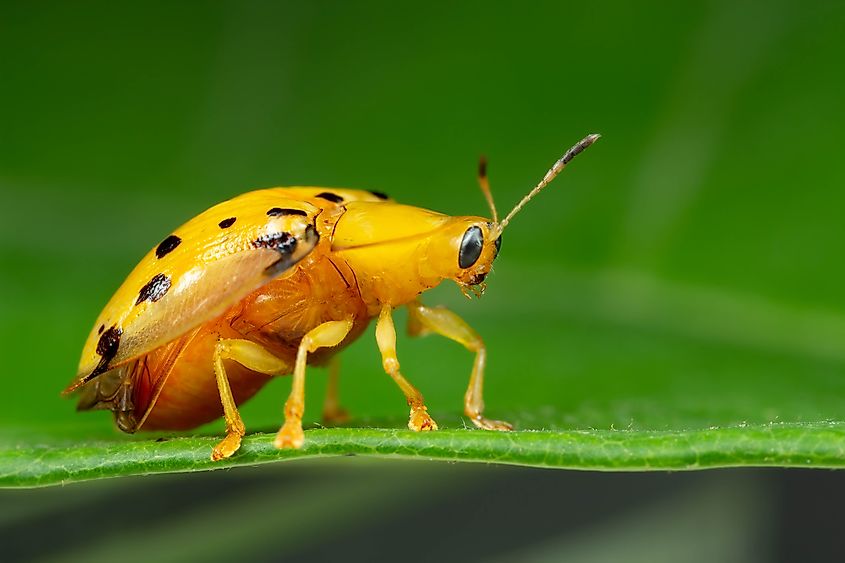
Researchers have found that the golden tortoise beetle’s color change results from structural coloration rather than pigment. The beetle’s transparent cuticle contains microscopic layers that manipulate light, producing the shifting gold and red hues. Fluid movement beneath the cuticle, specifically changes in the hemolymph (insect blood), alters how light reflects off the surface. This discovery highlights the beetle’s unique optical system, which is reversible and highly efficient.
Scientists from the biomimicry and materials science fields have shown great interest in this natural phenomenon. The beetle’s ability to change color rapidly inspires innovations in adaptive materials and camouflage technology. Studies continue to explore the exact physical and biological mechanisms behind this color transformation, revealing new insights into how nature achieves dynamic visual effects without relying on pigments.
Behavior and Life Cycle
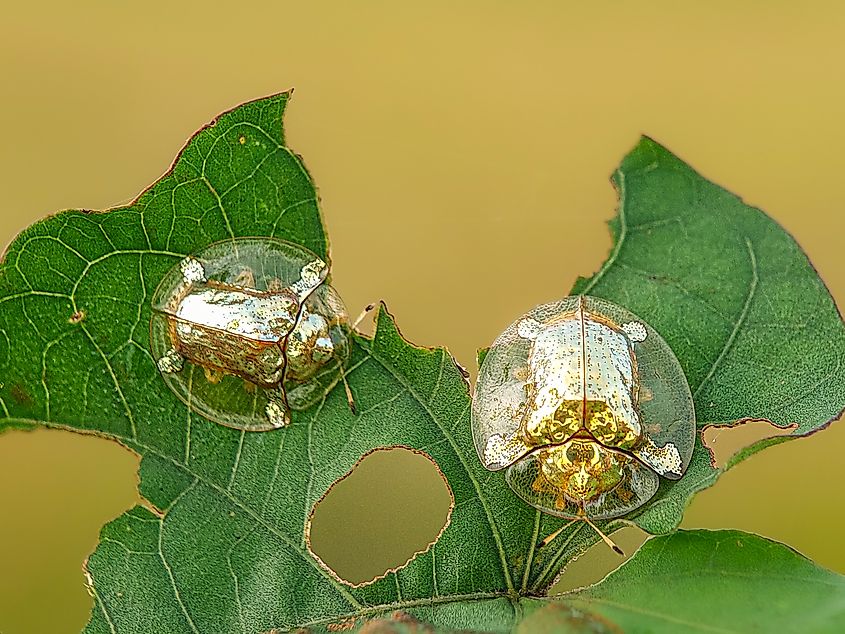
The golden tortoise beetle feeds primarily on leaves by scraping the surface tissue, which can sometimes cause damage to host plants such as sweet potato and morning glory. Females lay clusters of eggs on the undersides of leaves, providing protection during early development. Upon hatching, larvae create defensive shields made of their own feces and shed skins. These fecal shields help deter predators and parasites. While larvae use this physical defense, adult beetles rely mainly on their rapid color change ability to avoid threats. This combination of defense strategies helps the beetle survive through different life stages.
Human Fascination and Symbolism
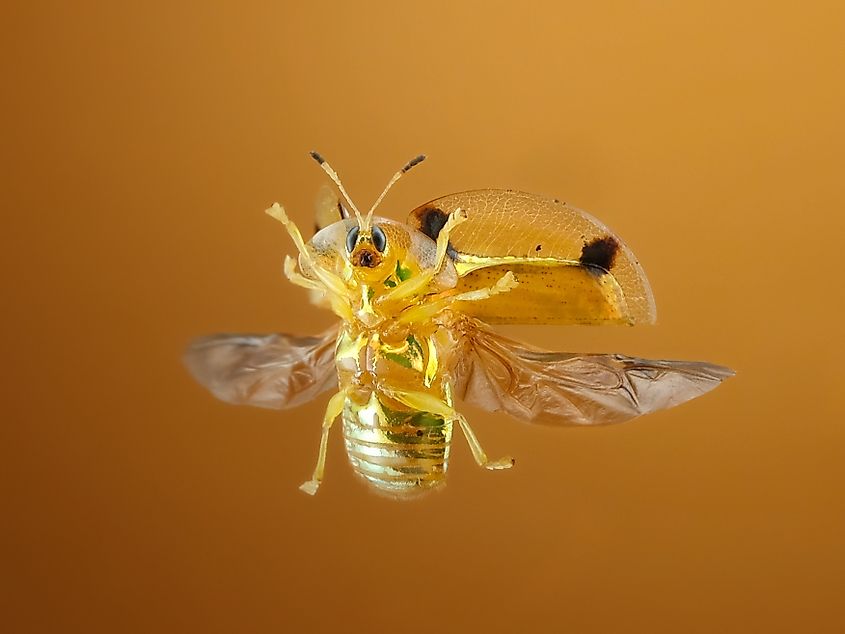
The golden tortoise beetle has long attracted interest from collectors and entomologists because of its unusual and striking color changes. Artists and educators often use it to illustrate concepts of adaptation and nature’s creativity. Researchers study this beetle to better understand structural coloration and to inspire innovations in materials science. Beyond science, the beetle serves as a symbol of transformation and hidden strength, reminding people that appearances can shift quickly under pressure. Its shimmering colors and remarkable abilities make it an enduring subject of curiosity and admiration across cultures and disciplines.
A Small Creature with a Big Lesson
The golden tortoise beetle is more than a visually striking insect. It highlights the complexity and subtlety of natural adaptations. It's a quick and reversible color change that challenges assumptions about how animals communicate and defend themselves. This beetle serves as a reminder that nature often holds surprises beneath simple appearances. Studying it encourages a deeper appreciation for the small details that contribute to survival. In this way, the golden tortoise beetle offers lessons beyond biology, inspiring curiosity and respect for the natural world.
